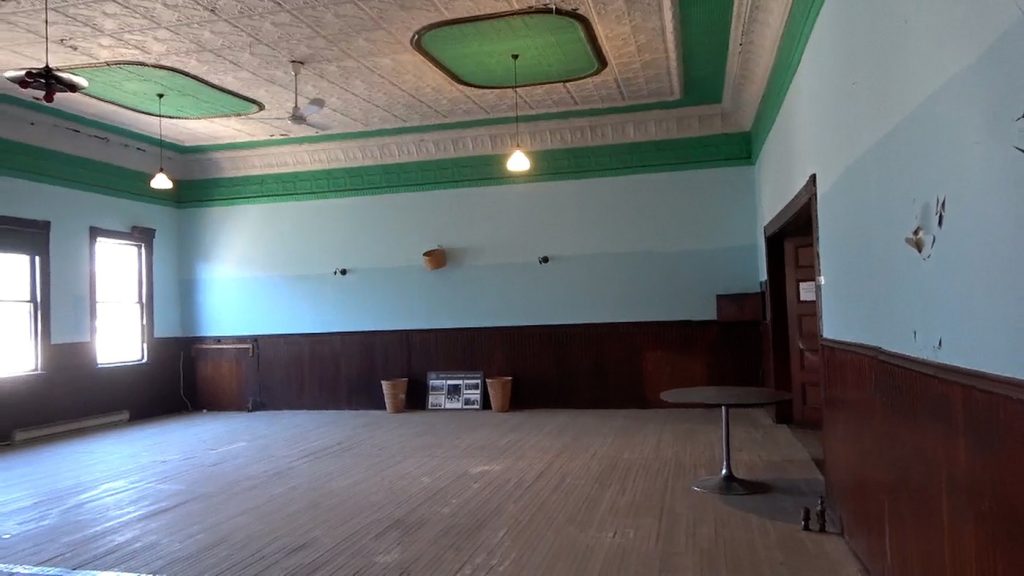ST. STEPHEN The increasing wave of patriotism in Canada, sparked by tensions with the U.S. under President Donald Trump, is shedding light on the country's contributions to the world, with a particular focus on the sport of basketball. In St. Stephen, New Brunswick, a small mill town is advocating for the recognition of what it claims to be the world’s oldest surviving basketball court, where a recorded game took place on October 17, 1893.
For years, residents of St. Stephen have sought to have the site properly acknowledged and transformed into a museum, a dream that they believe is now more achievable due to the current surge in Canadian pride. Advocates argue that Canadians deserve a dedicated space to honor basketball, a sport invented by Canadian-born James Naismith while he was at the YMCA Training School in Springfield, Massachusetts.
Tom Liston, a tech investor originally from New Brunswick, emphasized the importance of this history. “A Canadian invented the game, and the world’s oldest court where the game was first played in Canada is sitting in St. Stephen, N.B.,” he stated, noting a growing awareness of this fact among people.
The introduction of basketball to St. Stephen can be credited to Lyman Archibald, a Nova Scotia native and disciple of Naismith, who was appointed as the director of the local YMCA. Over time, the building housing the court has served various purposes, including functioning as a recruiting center during World War I, a dance hall, a meeting location for the Oddfellows Society, and the first pharmacy in the province.
A significant moment occurred in 2010 when a fire revealed the original hardwood gym floor hidden beneath carpeting. While the claim of “world’s oldest” is challenged by some historians—who assert that the Paris YMCA preserves an older court in its original condition—the court in St. Stephen holds the distinction of hosting the first documented game in Canada.
As of today, the gym features a fruit basket as a nod to the original baskets used by Naismith, though it has been over a century since its birch floor was last utilized for a game. The walls are crumbling, and maintenance issues such as a chirping smoke alarm can be heard during visits.
Canada 1st Basketball, a non-profit organization led by Liston, aims to renovate the building into an “experience centre” that would include a hall of fame, interactive exhibits, and facilities for events and youth programming. The ambitious project targets a total funding goal of $18 million, seeking $6 million from private and corporate sources, along with equal amounts from provincial and federal governments. According to Liston, around $3.5 million has already been raised from private donors to acquire the property.
Miranda Ayim, a prominent Canadian basketball player and flag-bearer at the Tokyo 2021 Olympic Games, expressed her appreciation for the court’s historical significance, emphasizing the game’s ability to foster community and inclusivity. “It’s a wonderful game. It keeps you active, but also beyond that, it brings people together regardless of background,” she remarked, highlighting the game’s universal appeal.
David Ganong, executive vice-chair of Ganong Bros. in St. Stephen and also part of Canada 1st Basketball, pointed to the political climate as an opportune moment to advance the basketball project. He noted a resurgence of Canadian patriotism, stating, “We’ve got a great spark of Canadian patriotism coming on right now, and I think this fits in extremely well with that.” The sentiment was echoed by Richard Fulton, another member of the group, who believes the center would serve as a source of national pride, reinforcing a unique Canadian identity.
St. Stephen Mayor Allan MacEachern reinforced the community's responsibility to preserve and showcase the world’s oldest basketball court. “The political climate it’s been a crazy world and that is all the more reason why we need something like this to dream about and to enjoy,” he commented, emphasizing the significance of the historical site for both local and national identity.










